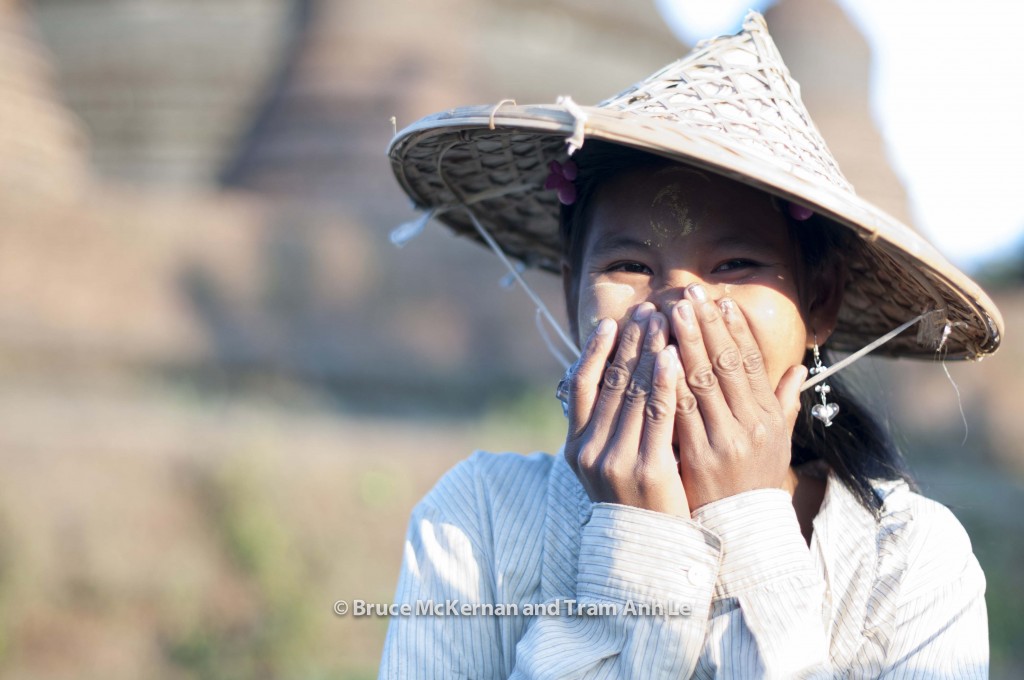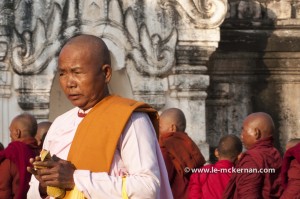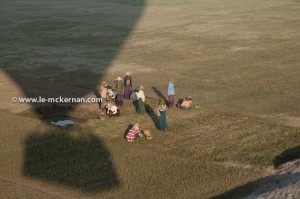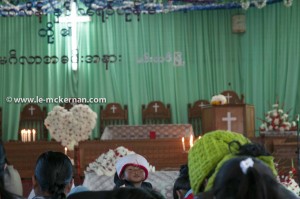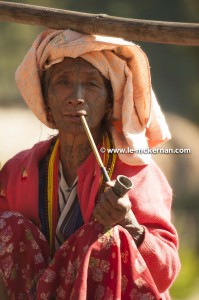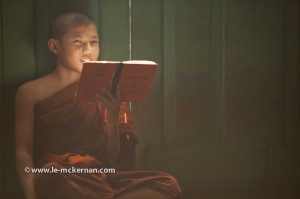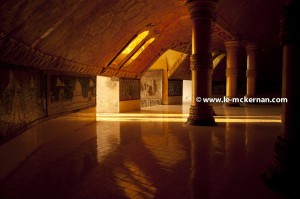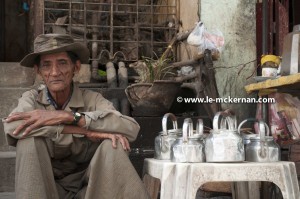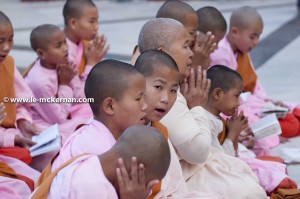Travel Blog – Burma 2011
We had a very positive experience travelling with Nevada Wier when she led the National Geographics Photography Tour of India in 2009. So, when she emailed to her friends and clients that she was running a private tour to Burma, the following is exactly what transpired:
Tram (in home office reading email): “Hey Bruce … Nevada. Burma. 2011.”
Bruce (downstairs in the living rooom): “YES!!!”
Tram emails Nevada: “We’re coming!”
Burma is a country that I’ve always wanted to visit but always held back because of the travel boycott advocated by many (but not all) Burmese political dissidents as the military junta benefits directly from international tourism. I’d read the Lonely Planet’s advice column about whether or not to go and vacillated for a long time. On the one hand, the military junta is a major beneficiary of the travel dollars. But, on the other hand, if tourists are careful about where to spend the money, then they can ensure that a significant amount of spend will go directly to the local Burmese. Nevada is an expert on Burma and with her in the lead, our concerns about travelling to this country were completely assuaged. And, it was absolutely the right call — because very soon after, Aung San Suu Kyi was released and the whole tourist industry exploded. Everyone is now visiting Burma, and as I understand it, the prices for hotels and flights have skyrocketed. Our timing was completely auspicious! And the country certainly did not disappoint!
As Burma has always captured my imagination, I wanted to spend as much time as possible to rumble thru the streets. To this end, Bruce and I arrived 2 days before the main group. And, we used our free time wisely — our itinerary was largely based around our stomach and we’d plotted our course based on the Lonely Planet’s food recommendations. Fortunately, the streets were safe to walk around and, if necessary, the taxis were cheap if the distance was too great. Under our own steam, we’d visited a Hindu temple, a synagogue, and lots of monasteries. And when the heat was too oppressive and/or if we needed a “cool porcelain break” (i.e. visit the loo), then it was a tea (or, rather a G&T … a gin and tonic) break at a nice hotel such as The Strand.
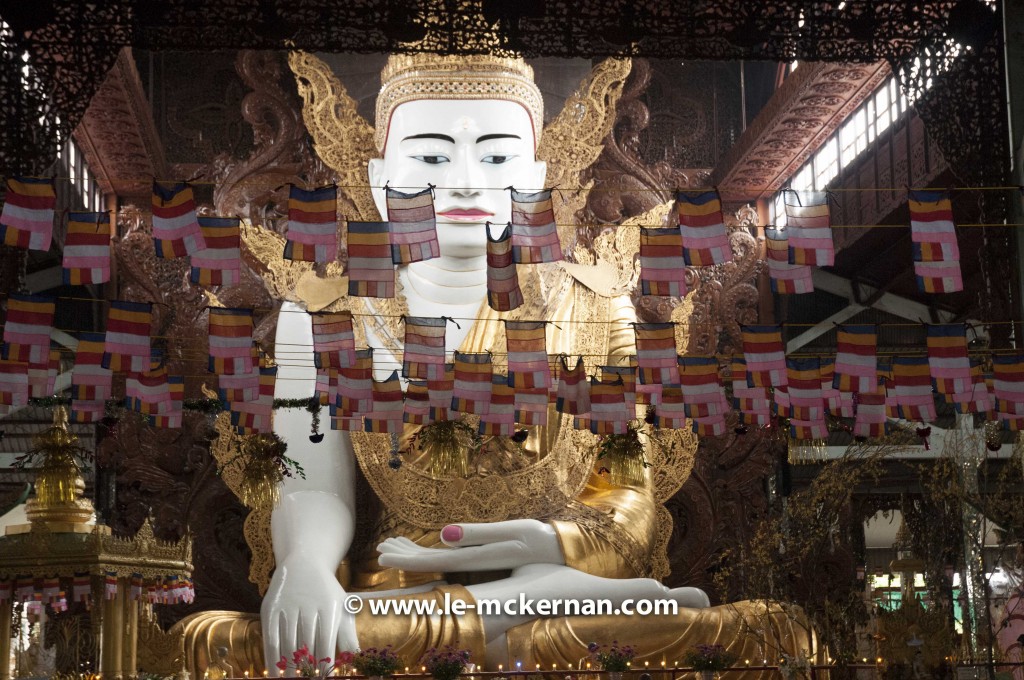
Ngahtatgyi Paya – one of the most impressive sitting Buddhas in Southern Burma
While in Yangon, we stayed at the Traders Hotel (on Bogyoke Aung San Road) and the unique thing about this hotel is that it is also home to The United Nations. The UN leased a floor in this hotel to run their initiatives and as such, it was an odd juxaposition to see bleary-eyed tourists with stacks of suitcases standing next to UN officers in the elevator/lifts. But then again, Burma is a country of odd juxtapositions. In Yangon, you can be forgiven to forget that you’re in one of the last unspoiled countries in the world as Yangon feels like a modern albeit quaint Asian city. But once outside of Yangon, you’ll see the real Burma where ox-pulled carts and overloaded passenger trucks compete with the modern 4x4s (used almost exclusively by the tourists and government officials).
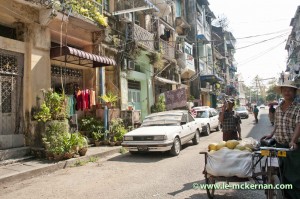
quaint Yangon
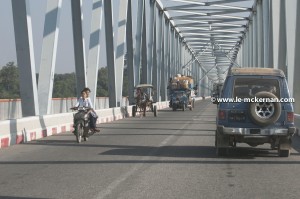
transportation by any means possible …

Our trip was designed to see the beauty of Burma in 15 days. As it was impossible to visit every part of Burma in just 15 days, we skipped Mandalay and Inle Lake (perhaps for another visit another time) but the highlight of the trip was spending three days with the tattooed Chin Tribe at Kyahto Village in Western Burma. Travel to this area was restricted and required special travel permits — as such, this was an experience rarely experienced by most.
Our first stop was to Bagan in central Burma. Bagan fills a 26 sq. mile arid plain with 4000+ temples with some dating back centuries. As such, it is a must-visit for any visitor (note: there is a mandatory US$10 entrance fee to the Bagan Archeological Zone which goes to the government). Our trip was timed to coincide with the Ananda Temple Festival where people from all over the region come to offer donations/offerings to over a thousand monks and monklets. The offering varied based on the ability of donator and the offerings were piled onto large tables where senior monks distributed the goods to the queuing monks. To prevent double-dipping, each monk was given a ticket at his monastery and must have this ticket to redeem his offering.
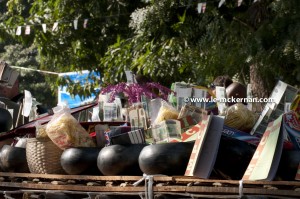
a sample of the offerings — this pile was for young monks (note: toothpaste and notebooks for homework)
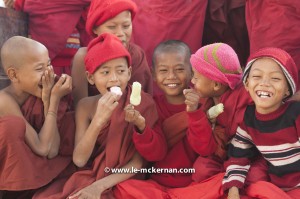
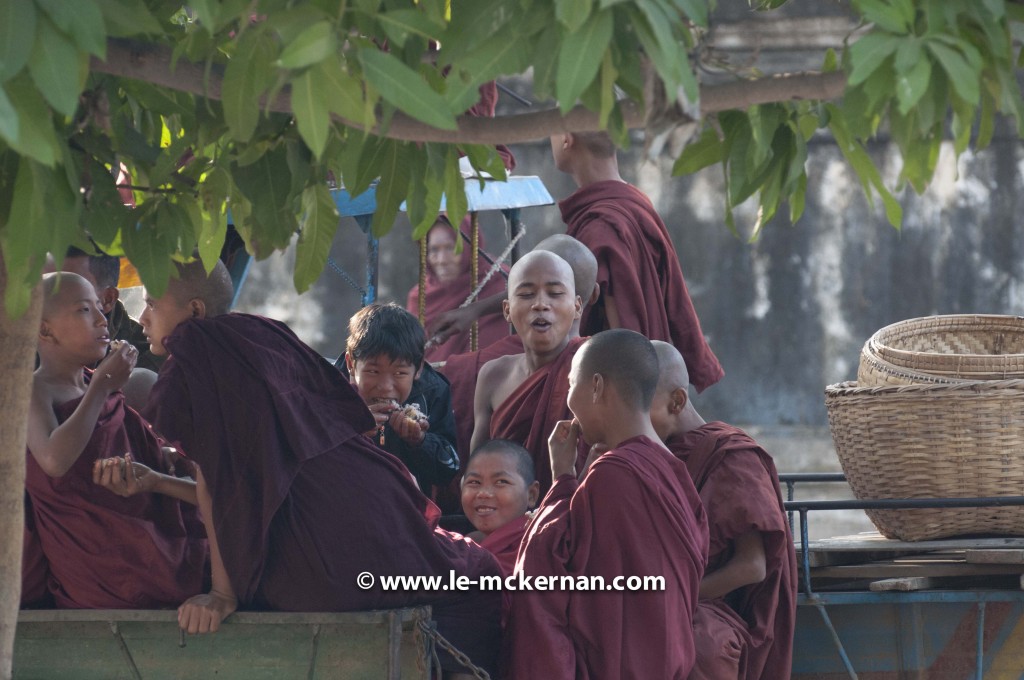
It was absolutely endearing to see the monklets enjoy their offerings. Moreso, it was a joy to see young boys being boys. In the West, we often have an stereotypical view of the stoic monks. But, the truth is that in Burma, every man is encourage to join a monastery at least once in his life. (Our local fixer later mentioned that after guiding our group, he planned to ‘check in’ to his local monastery for two weeks to detox his well-being.) This explanation makes sense especially in light of the brutal government crackdown on the 2007 protests which were largely led by monks (some of which were, in effect, ordinary men in robes).
Sadly, it seems that the offerings were for monks and monklets only. The nuns appeared to be excluded.
Next to the temple grounds, the locals have set up shops, a fairground, and sleeping quarters. Although Burma was under heavy international sanctions (at the time) and as such, it was largely isolated from the West (but not to the extreme as in North Korea), we were completely suprised to see rows and rows of Justin Bieber (?!?!!?) posters at the market stalls. This was almost as bizzare as seeing a Manchester United poster in a tiny local cafe in ‘Nowhere Burma’. When we asked the local fixer about this, he mentioned that the military junta does not dare to switch off all satellite transmissions — this is because many in the army are big football fans and it would cause too much trouble if the junior officers could not watch European football!
Another interesting observation was on the resiliency of the ordinary Burmese. On the temporary fairground, the festival organizers had installed a ferris wheel. But, this machine did not have an engine to spin the wheel around. The solution was to have young men climb up the device and pull the wheel as they jump off! Truly amazing!
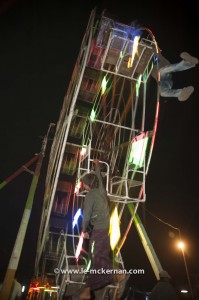
We started the next day in pure luxury — with an early morning balloon ride over Bagan. We were lucky in that it was a gusty morning (but not too much to warrant a flight cancellation) and as such, we had a relatively longer flight because we had difficulties landing (landed successfully on the third attempt). Couldn’t help but feeel sorry for the poor lads who had to ‘chase’ the balloon and then use their bodyweight to ‘anchor’ us down. Every time we tried to land, our balloon seemed to be drawing a crowd. The crowd consisted mainly of young kids — half are interested in us (the foreigners) and the other half have something to sell. Given that these kids made such an effort to find us, I bought a copy of the omnipresent Burmese Days by George Orwell — except that my version was decidely a bootleg variety. The cover looked like the genuine article but inside, the pages were photocopied!

View from the air — village and temple ruins merged together
After a few days of photography mania around Bagan (temples, monks, monklets, streetlife, sunrise and sunset!), it was time to hit the bumpy dirt roads and drive West to Mindat before trekking to Kyahto Village to spend time with the Chin Tribe. Again, we had luck on our side as our local fixer in Mindat had a relative who was getting married on the day of our arrival and we were all invited to attend the church wedding and the festivities. (While much of Burma are Buddhists, the Chins are mostly Christians and are believers in animism.) As such, it was a real treat to witness a local wedding and then partake in a local meal with the wedding party the next day.
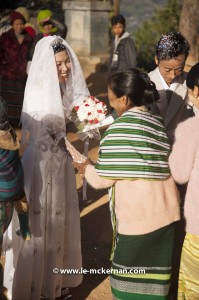
the happy couple . . .
Whilst in Mindat, we were told of the rat plague that ravaged this region a few months prior. Apparently, this was caused by the blooming of a particular bamboo flower. Fortunately, this type of bamboo does not flower often but when it does, it affects the rats’ fertility. And the effects were devastating. As a consequence of the rat plague, not only have the villagers lost all of their crops for the season, but in addition, their children were pulled out of school so that the kids can help work the fields. The Chins are subsistence farmers which mean that they have to start all over again and this unfortunately means that they have to slash and burn more land. The situation was pretty dire as one of the shaman offered to sell an amber necklace that has been in his family for several generations — he was desparate to raise cash to buy rice for the village. The good news was that (1) as a group and under our own volition, we donated several hundred dollars to the tribe and (2) while we were there, we saw foreign food aid (in particular, Australia Aid) coming into the region.
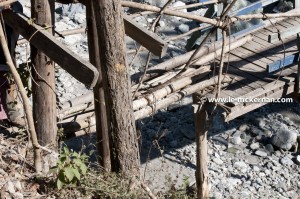
a makeshift bridge – enroute to Kyahto Village
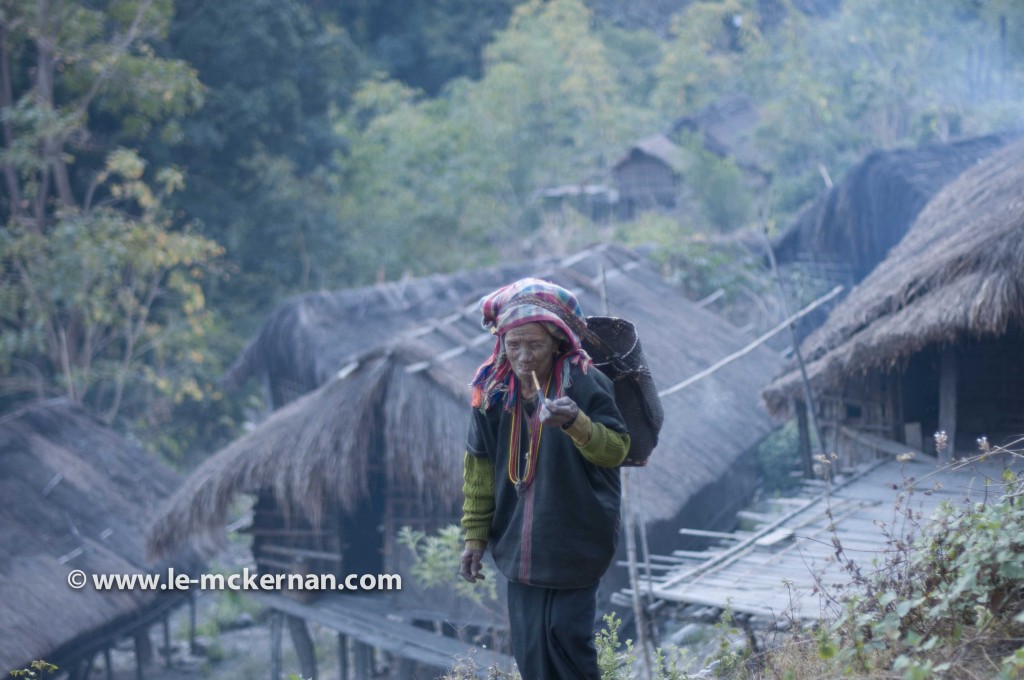
Not sure how, but, I managed to pick up a terrible bug during my time in Mindat. This meant that during our trek to Kyahto Village, I was completely out of sorts. As such, what should have been a three hours trek turned into a half-day trek to the village. When we finally arrived and after Bruce set up our sleeping bags on the wooden floor (with a mosquito net to protect us), I zonked out. For the next two days, I slept and slept. Although I missed out on visiting nearby villages, I had a special treat …. The kids in Kyahto Village were very interested in me. Here was a Western (and Asian) woman cuddled up in her sleeping bag during the middle of the day — was she sick? Tired? Lazy? Uninterested in us? They gathered right outside of the hut and tried to get a glance in. Feeling slightly better, I entertained them with my iPad and they were completely mesmerized with our photos from previous travels. They shrieked at the sight of the masked Bhutan dancers. They giggled at any photographs that had animals. And, they automatically connected with any photographs I had with other children from around the world.
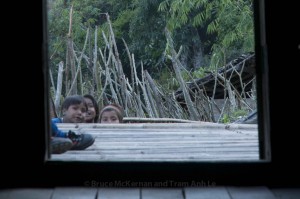
Later that evening, while I was sleeping (again), the kids told their elders about my iPad and the elders were interested to see this amazing device. Bruce then showed them his iPad and in particular, showed them an application called Star Walk. The concept behind Star Walk is that you point to any celestial object in the sky and Star Walk will describe what that object is. In addition, it will show the full starscape and as you move the iPad around, the internal compass will match the movement and the starscape will change accordingly. Unfortunately, one of the elders pointed the iPad downwards but still saw stars on the screen. The result was a tremendous debate whether or not this machine really worked. The village shaman was an educated man and therefore knew that the world was round. To help settle the debate, the villagers and the shaman knew that the moon was behind a hill but at the present moment, the moon could not be seen. As a test of whether or not the machine really worked, they pointed the iPad to the hill and Star Walk showed the moon. “The Machine works” was the villager’s verdict!
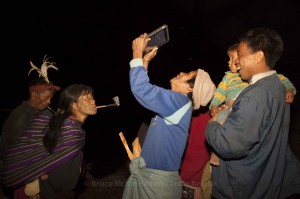
The Chins are famous for their tattooed women with each village/tribe having their own unique pattern. The Burmese government is actively trying to end this practice and imposes a significant fine. As a result, the majority of the tattooed women we saw were older — with the youngest tattooed woman in her late twenties.
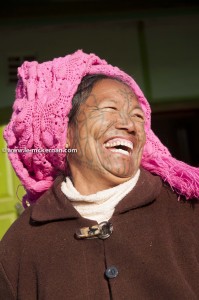
Burma
During one evening, the Chins hosted a fireside dance for our group. The highlight of this was when one of the elder woman sang a song that only she knew the lyrics to — the younger generations were not interested in learning the lyrics and as such when she passes away, the song will be forgotten. To hear this song, please click on the below image to hear the video recording.

After three days of Chin hospitality, it was time to head west to Mrauk-U. But, in order to head west, we needed to head south and fly west as it would have been too onerous to attempt to drive west. As such, the detour included heading back to Bagan (overnight stop) and then fly back to Yangon (overnight stop) for our flight to Sittwe (one day stopover) and then a boat ride to Mrauk-U.
At our Yangon stopover, Nevada crammed in as many photographic excursions as possible. We did sunrise photography at Shwedagon Pagoda. And, gatecrashed into a local monastery where the young monklets were at study (see video). Walked the Yangon streets to capture streetlife. And, in the evening, we went to the Sin Oo Jetty by the Yangon River to photograph riverlife at sunset.
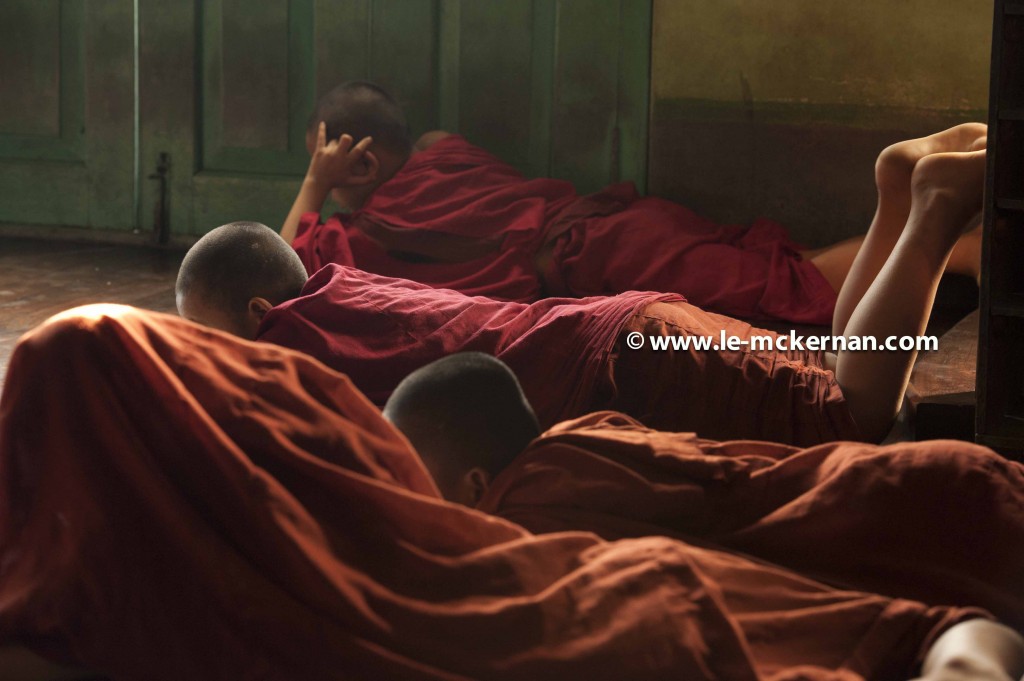
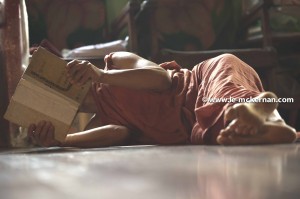
Headmaster at Study Hall

Streetlife, Chinatown – Yangon
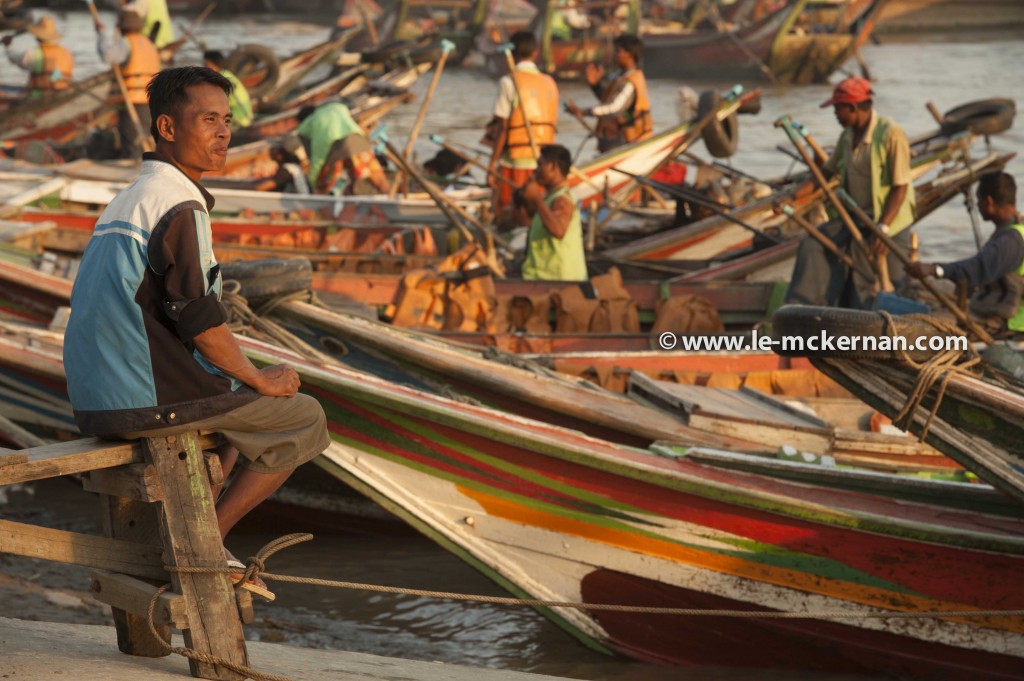
Yangon riverside — river taxi ready for passengers
Given Sittwe’s proximity to Bangladesh, Sittwe has a more diverse mix in race (Rakhaing, Indian, and Burmese) and in religion (Hindus, Muslims, and Buddhists). At the time of our visit in 2011, Sittwe was peaceful. Sadly in 2012, sectarian violence exploded resulting in murder, burning of homes and the mass displacement of people.
We were completely unaware of the potential tinderbox during our visit. At this time, Sittwe was a place of rural tranquility. We particularly enjoyed visiting the famous fish market before sunrise. At the first blush of light, about a hundred little boat returned to shore with their catch and the fish market bustled into activity. People of all race, age, and beliefs were there in the market.
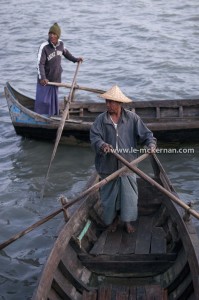
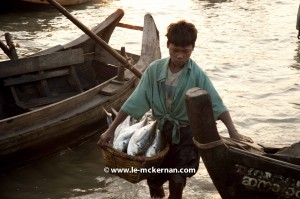

dried fish, Sittwe
After the fish market, we also visited the Mahaatulamarazein Monastery at sunset and caught the most amazing colours!
The next day, we hopped onto a chartered boat for a 6-hour cruise to Mrauk-U. During this lull, some sunbathed/napped on the deck while others were busy photographing the wildlife on the river banks and watched the world sailed by. Nevada serenaded those interested with a reading from a book about the aftermath of Typhoon Nargis and the subsequent riots in 2007. It was bliss to sit on the deck chair listening to riverlife, the birds, and Nevada’s dulcet readings.

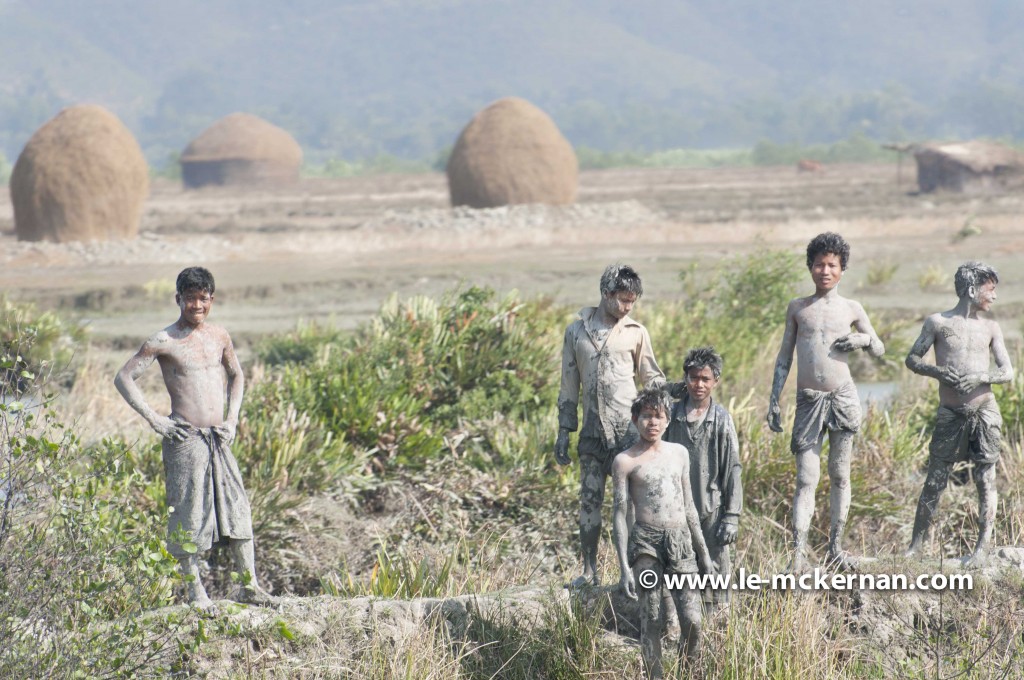
boys playing by the river banks
Mrauk-U was once a center of one of Burma’s most powerful kingdons. Unlike Bagan where the temple ruins are strewn over a vast arid plain, the ruins of Mrauk-U sit on or against bluffs in hilly terrain interlaced with streams and leafy trees. As such, there was no deja-vu or feeling of ‘did it, done it’ about Mrauk-U. The magic was still very strong. And, the locals were so welcoming that we were able to photograph intimate shots of local monks bathing (with clothes on, of course), villagers collecting water from the local well, village girls carrying heavy goods homes, etc.

Monks – at evening bath
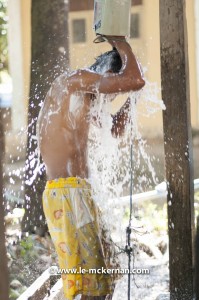
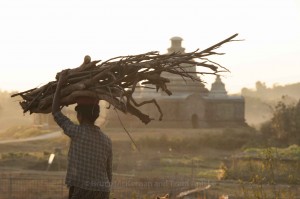
But the best photography excursion was saved for last — sunrise photography of the temple ruins over the leafy hills. We were extraordinarily lucky in that local monklets (who were very interested in us and followed us) allowed us to photograph them against the temples in the background. MAGIC!
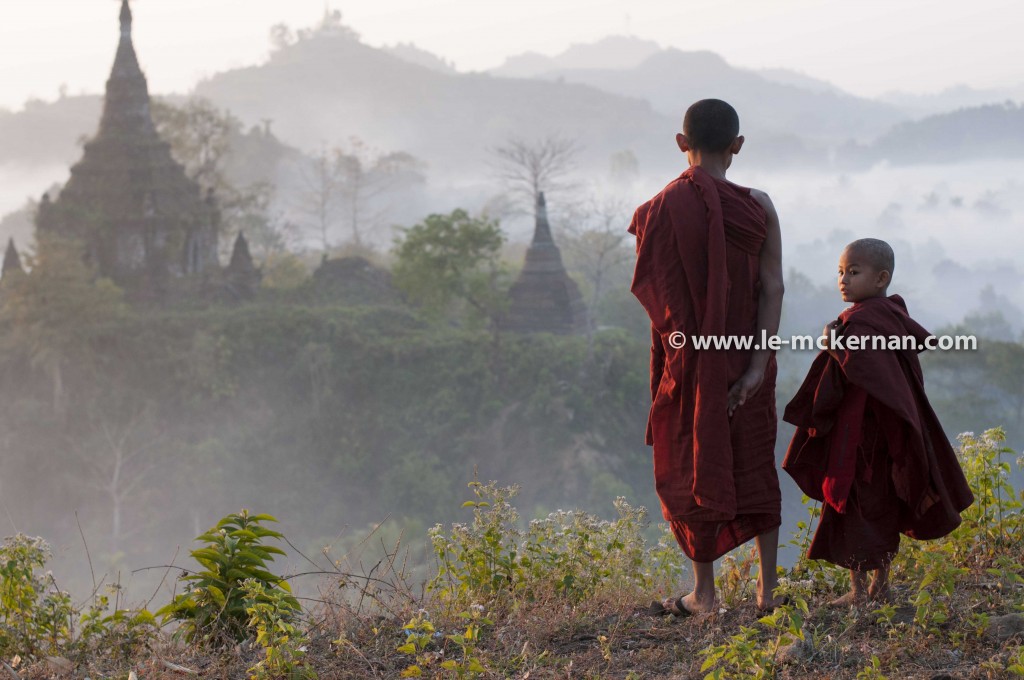
Mrauk-U – The ‘fog’ in the background is actually woodfire smoke. Like clockwork, the valley fills with smoke during breakfast and dinner time.

Morning stretch, sunrise at Mrauk-U
Sadly, Mrauk-U was our last stop before heading back to Yangon for our flight to Bangkok and then onwards to Hong Kong.
As Burma will likely change in response to the political changes, it will remain to be seen if the Burma we witnessed in Jan 2011 will be anything like the Burma we will see during our next visit (no dates set). Regardless, it is definitely a country worth revisiting!
+ + + + + + + + + + + + + + +
This trip was organized as a private tour by Nevada Wier (www.nevadawier.com).
For more photographs of Burma, please click on the below:
For more photographs on Burmese Monks, please click on the album dedicated to Monks and Monklets (and a few sprinklings of Nuns and Nunnies):
Advice:
+ Changing money in Burma was very similar to changing money in Central Asia — every middlemen wanted clean, undamanged (i.e. no folds), large foreign denominations. If they know that you’ve just arrived into the country, then they will reject any currency that isn’t ‘perfect’. If, however, they know that you have been in the country for sometime and if THEY want to close the deal, then they might give you a poorer exchange rate for the ‘damaged’ bills. Best advice I can give to future travellers is to make sure that your foreign currency looks like they’ve just been printed! And, only exchange enough money for little things like bottled water, entrance fees, donations and taxis because most places accept US dollars.
+ At time of travel (Jan 2011), there wasn’t a ‘visa on arrival’ scheme. Anyone arriving without the correct visa will be denied entry and send back on the first available plane.
